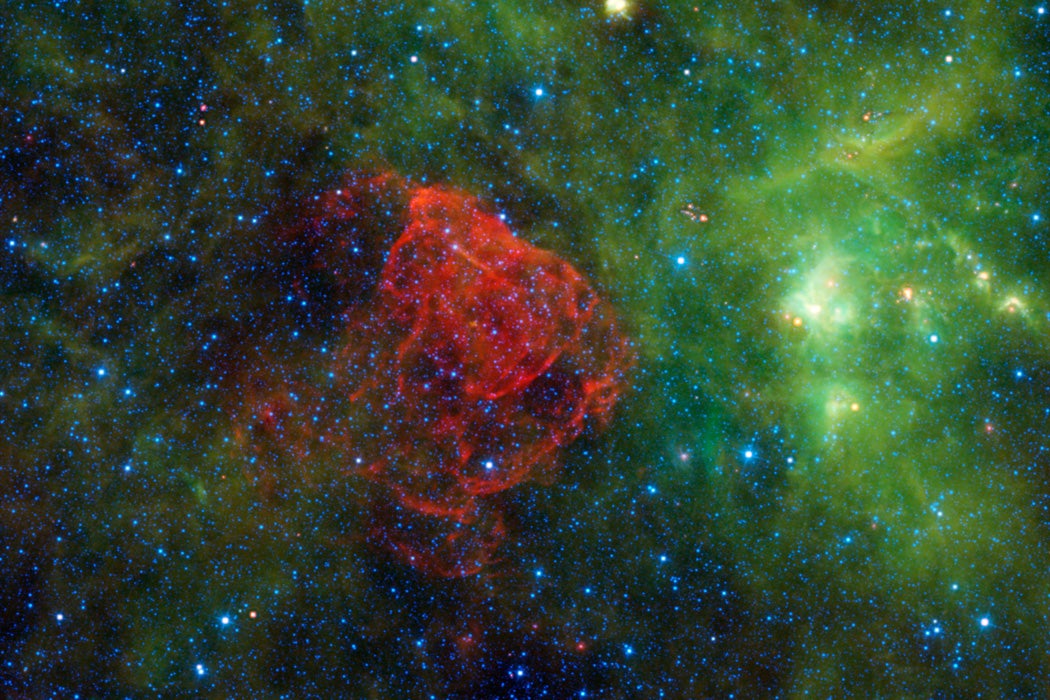Animals go extinct for all sorts of reasons. But a new study has suggested that some large bodied-organisms, the legendary megalodon among them, went extinct through unexpected means: supernova explosions. The idea is that radiation from the distant cosmic explosions caused an epidemic of mutations and cancer in these huge organisms. It might sound far-fetched, but the idea of supernovas as a driver of extinctions is actually not new.
The idea of extinction by supernova-induced mutation was introduced by paleontologist Otto Schindewolf in the 1950s. Schindewolf believed that supernova radiation would bathe organisms and cause a lethal spike in mutations. Various authors have explored extinction by radiation since then, but, as Steven D’Hondt points out in a comprehensive review of extraterrestrial extinction theories, few studies propose the same mechanism twice. For example, a 1968 paper pooh-poohed the mutation theory, proposing instead that an acute dose of radiation killed organisms directly through radiation poisoning. A 1970 paper then rejected the acute dose theory and returned to the mutation idea, leaving the whole field of study back where it started.
Another school of thought held that cosmic radiation could cause extinctions indirectly. A 1971 paper noted that supernovae release a temporary but very large burst in x-rays. According to this theory, upon contact with the atmosphere, the x-rays might cause climatic changes significant enough to drive extinctions. Physicists John Ellis and David N. Schramm expanded upon this theory in 1995. Supernovae really do release a lot of energy. Ellis and Schramm observed the remnants of a nearby supernova, and calculated that such a phenomenon could hit Earth with enough energy to temporarily destroy or severely damage Earth’s ozone layer.
Get Our Newsletter
In the absence of the ozone layer, cosmic rays and U.V. radiation would be much stronger. Ellis and Schramm don’t think that any species were directly killed by horrific sunburn, though. Rather, they note the effect that such a change in solar radiation would have on photosynthetic organisms, especially phytoplankton in the marine environment. Severe damage to phytoplankton could disrupt the base of the food web as well as supporting organisms such as coral, and thus potentially lead to mass extinction.
Despite their thorough analysis of the situation, even Ellis and Schramm did not claim to prove that a supernova has ever actually caused a mass extinction, only that it warrants further study.







